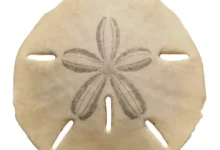JAMB Past Questions And Answers on Biology UTME. Below is how to get jamb past questions for biology and stips on How to pass JAMB successfully in 2023 UTME.

The Joint Admission and Matriculation Board (JAMB) has its patterns of asking questions in biology and understanding the patterns and the key topics in Biology would help you perform well.
JAMB Past Questions and Answers on Biology
This new process has helped in reducing malpractice, saving time and cost-effective means of making UTME a fair playing ground for all candidates. In the time past, the rate of malpractice was high but this has reduced via the introduction of CBT.
However, many students haven’t been able to integrate well with JAMB CBT and this has led to failure or underperformance of many students. For any student to pass JAMB successfully, he/she must master the act of taking CBT which is quite different from paper based test. Mastering this act will enable you to pass JAMB successfully.
Sample JAMB Past Questions and Answers on Biology
Note: The questions and answers below are for practice. Use them to prepare for JAMB mock and JAMB examination.
1. In the angiosperm, the sieve tube members are living non-nucleated, but they are usually accompanied by
A. Cork cambium
B. Phloem rays
C. Vascular cambium
D. Companion cells
ANSWER: D (companion cells)
2. Abscisic acid is a chemical that prepares plants for
A. ripening fruits
B. emergence of seedling
C. for leaf fall
D. reproduction
ANSWER: C (leaf fall)
Download Free JAMB Past Questions and Answers on Biology
3. In any population, any specific allele will mutate at one time or another, usually to a non-functional or harmful form. The proportion of gametes carrying new mutant alleles of a given locus is called
A. the mutation rate
B. the selection coefficient
C. the relative fitness
D. the lethal genotype
ANSWER: D (lethal genotype)
4. In Mosses, the saprophyte generation is highly prominent producing spores in a cone like
A. gametophyte
B. strobilus
C. antheridium
D. archegonium
ANSWER: B (strobilus)
5. When osmotic acid is boiled with a solution of food substances, it gave a colour black precipitate showing the presence of
A. Fats and oil
B. proteins
C. amino acids
D. starch
ANSWER: A (fat and oil)
6. plants adapted to life in salty march are known as
A. hydrophytes
B. xerophytes
C. halophytes
D. epiphytes
ANSWER: C (halophytes)
7. A circulatory system that does not allow mixing of oxygenated blood in the mammalian heart is referred to as
A. open
B. haemocoelic
C. single
D. closed
ANSWER: D (closed)
8 In a pyramid of numbers, it is common to have with the smallest of individual
A. secondary consumers
B. tertiary consumers
C. primary consumers
D. primary producers
ANSWER: B (tertiary consumers)
9. One of these animal groups contain acoelomate member
A. Mollusca
B. Coelenterata
C. Arthropoda
D. reptilian
ANSWER: B (Coelenterata)
10. A flower that has both stamen and pistil is said to be
A. perfect
B. imperfect
C. pistillate
D. staminate.
ANSWER: A (perfect flower)
See: JAMB Registration Statistics
11. Sting cells are normally found in
A. flatworm
B. Hydra
C. Snails
D. Paramecium
ANSWER: B (hydra)
12. The annulus of fern sporangium helps in
A. spore dispersal
B. conduction of mineral salt
C. trapping of light energy
D. water retention
ANSWER: A (spore dispersal)
13. The respiratory organ in the land snail is
A. Radula
B. mantle
C. tentacle
D. foot
ANSWER: B (mantle)
14. The gill rakers of fishes take part in
A. feeding
B. respiration
C. swimming
D. diffusion
ANSWER: A (feeding)
15. The element common to protein, carbohydrate, and lipid is
A. hydrogen
B. sulphur
C. Nitrogen
D. phosphorous
ANSWER: A (hydrogen)
16. Which of the following is a plant excretory product?
A. Oil
B. cytokinin
C. resin
D. amino acid
ANSWER: C (resin)
17. Epigeal germination can be found in
A. sorghum
B. maize
C. millet
D. groundnut
ANSWER: D (groundnut)
18. Which of the following characters is NOT sex-linked
A. River blindness
B. Baldness
C. Haemophilia
D. Colour blindness
ANSWER: A (river blindness)
19. Which of the following diseases can be prevented by inoculation?
A. Syphilis
B. malaria fever
C. tuberculosis
D. acquired immune deficiency syndrome
ANSWER: C (tuberculosis)
20. Nitrogen-fixing micro-organism in leguminous plants live symbiotically in the
A. root nodules
B. tap roots
C. branch roots
D. root hairs
ANSWER: A (root nodules)
How to Get JAMB Past Questions and Answers on Biology
1. Pay the sum of N2,000 to the account below:
Account Name: Anietie okon
Account No: 2137310876
Bank: UBA
MOBILE TRANSFER IS ACCEPTED
After Payment, send the following;
(1) Email address
(2) depositors name
(3) amount paid
To Anietie okon via WhatsApp 08121865725.
100% guaranteed. We will send your Jamb Past Question and Answer in Biology in pdf download to your email immediately.
Tips How to pass JAMB successfully
This post will show you some study tips that will help you to excel in your academics. Relax and read to the end.
- Read and re-read what you have learnt. Do not only skim and scan. Sit down and do a thorough studying. People tend to forget up to 80% of what they read in just one day. Reading a course 2 to 4 times is very important for deep and lasting impression.
- For maximum comprehension, you need not hurry over a text. Be patient while studying, don’t be in a hurry while reading.
- Assess yourself by asking relevant questions on the topic you have read. Make reference to past question papers to know how the questions look like and what to expect during exam. Digest and answer the questions satisfactorily.
- Form a study group with friends and try to lecture them on the topic you have studied. it helps your subconscious mind internalize the subject matter. Try to share information, it helps a lot.
- The study group will help you discover some mistakes you might have been making and they will correct you.
- After each lecture or study group class, go back and study more.
- When reading, focus on one course or subject at time for effective understanding.
- Form a timetable for reading. If you are to read Mathematics today, face it and leave other courses except during exam time.
- Note, we are unique beings. There is a special time we all like reading, Some like reading in the day while some in the midnight, Understand yours and follow it effectively.
- While studying, employ the PQ3R method. It is important to studying technique. PQ3R- Preview, Question, Read, Recall, Review.
I can categorically tell you that if you follow all the study tips outlined above, passing your exams will very easy for you.
If you found this article useful, please share and leave a comment behind. Your comments are very useful. We want to serve you better.


